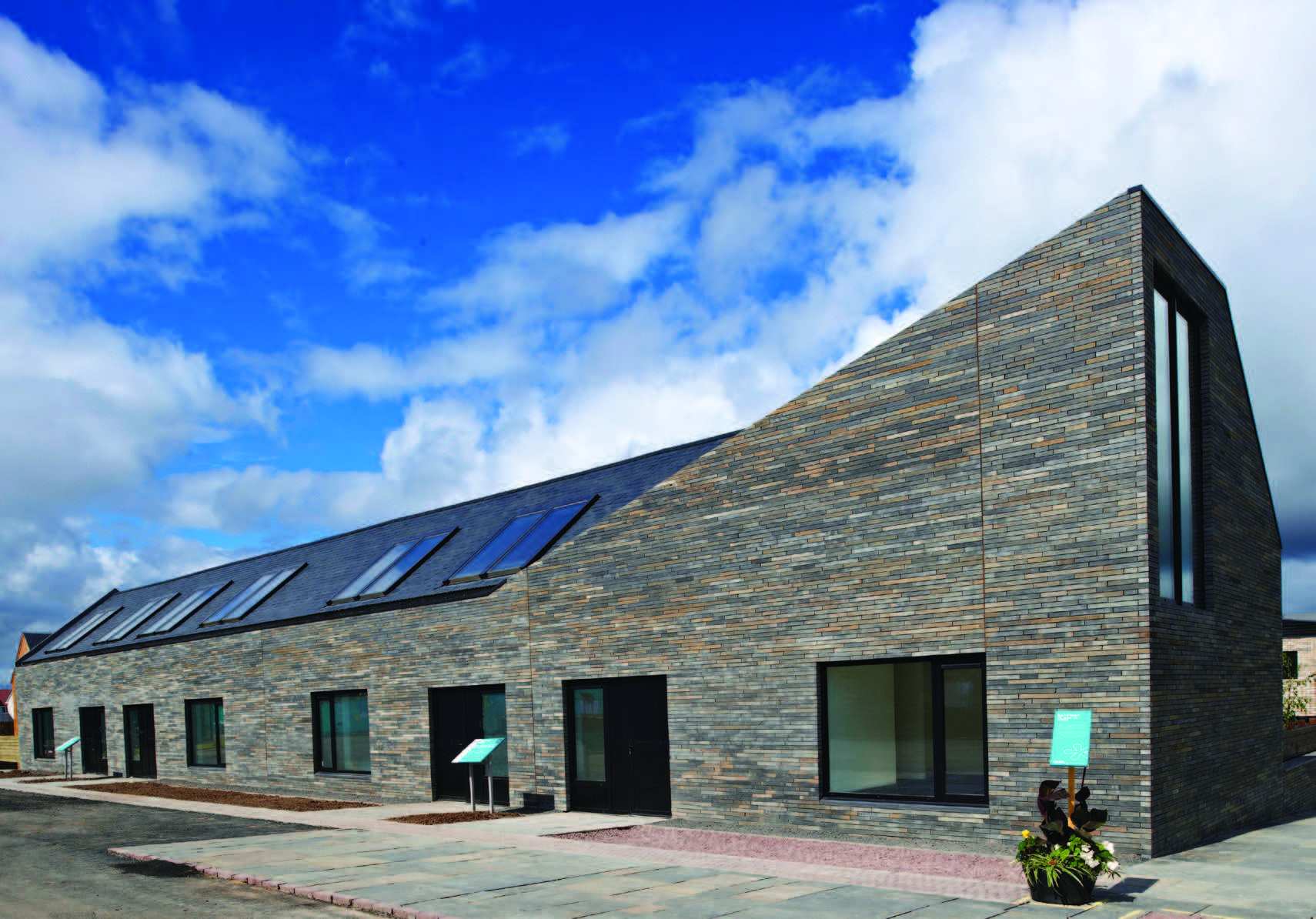The ‘Stone House’ is a terrace of four family-sized houses, each orientated around a private garden with upper levels holding access to a private terrace. As the name suggests, the building is externally constructed from Caithness stone. The house can be found at Scotland’s Housing Expo in Milton of Leys in Inverness.
The designers drew on vernacular forms to create a long, low, one-and-a-half-storey terrace with inhabited roof space. It uses indigenous materials and the specific landscape setting as inspiration with its seasonal changes in colour, texture and light.
Environmental impact was an important issue for the expo event. For this building, the architects explored, in detail, a sustainable approach to the construction and its end-use.
The super-insulated main structural elements were manufactured off-site locally and delivered to the site for a quick assembly. This timber frame structure was then clad in indigenous stone and timber. The house is insulated to ‘passive house’ standard, using locally sourced materials where possible.
Stone features
In larger buildings, stone signifies wealth, power, and permanence. When used at a domestic scale and based on local craft traditions, it appears modest and natural. The objective here was to re-interpret stone at a domestic scale, going beyond craft to a more modern approach for the 21st century.
The heaviness and linear quality of the stone is contrasted in this house with larch cladding to the rear to soften the garden elevation. The Caithness stone wall to the street and gable elevations of the house weighs 68 tonnes.
The fabric and geometry of the building combine to make this structure a permanent marker and gateway to the site.
Special techniques
The house takes on an overt physical expression through the Caithness stone, which roots the building to the site and locates the building in the wider landscape.
The application of materiality also seeks to express a positive and meaningful relationship between architecture and landscape, beyond the use of materials simply as decorative aspects of the building and site.
As if excavated from the surrounding landscape, the stone, now reassembled on the building’s façades, will appear like the dry stone walls found throughout Scotland.
Header image credit: Ewen Wetherspoon, Nord and Sust.
A library of sustainable building materials
Our website includes a web-based resource that showcases sustainable, traditional, innovative, recycled and low carbon building materials. If you are looking for inspiration or information on different types of materials to consider for your project, visit our materials library.

